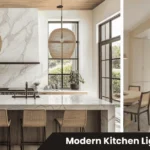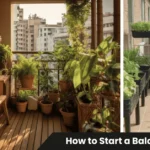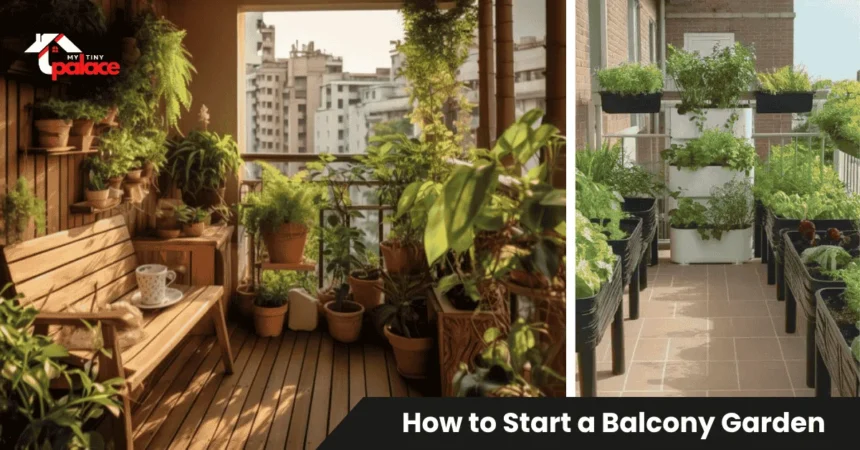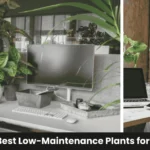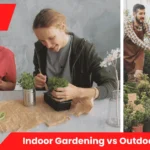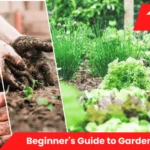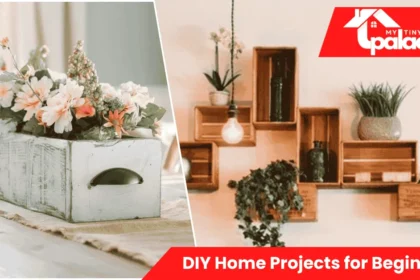Quick Overview: What You’ll Learn About Balcony Gardening
Turning your balcony into a green space sounds complicated, but it’s simpler than you think. You don’t need a yard or fancy equipment to grow fresh herbs, colorful flowers, or even vegetables. With just a few containers, the right soil, and some sunlight, you can create your own mini garden right outside your door. This guide walks you through every step — from planning your layout to picking plants that actually thrive in pots. Whether you’re renting an apartment or just working with a small outdoor area, you’ll learn exactly how to start a balcony garden that fits your space and lifestyle.
- Quick Overview: What You’ll Learn About Balcony Gardening
- What Is a Balcony Garden?
- Why Start a Balcony Garden? Benefits You’ll Love
- Planning Your Balcony Garden Layout
- Materials and Tools You’ll Need
- Choosing the Right Plants for Your Balcony Garden
- Step-by-Step: How to Start a Balcony Garden
- Costs, Time & Maintenance at a Glance
- Common Mistakes to Avoid in Balcony Gardening
- Final Thoughts: Growing Joy on Your Balcony
What Is a Balcony Garden?
A balcony garden is simply a collection of plants grown in containers on your balcony or small outdoor space. Unlike traditional gardens that need ground soil and large plots, balcony gardening relies on pots, planters, and vertical structures to make the most of limited areas. You can grow anything from herbs and vegetables to flowers and small shrubs — all without digging into the earth.
This type of container gardening works perfectly for apartment dwellers, renters, and anyone who doesn’t have access to a backyard. Since everything grows in movable containers, you can rearrange your setup whenever you want. You’re not tied to permanent installations or worried about damaging property. It’s flexible, accessible, and surprisingly productive even in tight spaces.
The key difference from ground gardening is control. You choose the soil mix, manage drainage directly, and can move plants to follow the sun or escape harsh weather. That control makes balcony gardening ideal for beginners who want to start small and learn as they grow.
Why Start a Balcony Garden? Benefits You’ll Love
Growing plants on your balcony does more than just look pretty. Studies show that spending time around greenery reduces stress and improves mood — even just a few minutes of watering and tending plants can calm your mind after a long day. Having a small garden right outside your living space gives you a quick mental reset without leaving home.
Air quality gets a boost, too. Plants naturally filter pollutants and release oxygen, making your balcony feel fresher. While a few pots won’t transform your entire apartment’s air, they create a noticeable difference in your immediate outdoor area. Plus, the act of caring for living things brings a sense of purpose and accomplishment that’s hard to find elsewhere.
There’s also the food factor. Imagine stepping outside to snip fresh basil for dinner or picking cherry tomatoes you grew yourself. Homegrown herbs and vegetables taste better and cost almost nothing after the initial setup. You’ll save trips to the store and reduce packaging waste at the same time.
Finally, a balcony garden transforms dull concrete into a personal retreat. It adds visual interest, attracts helpful pollinators like bees and butterflies, and gives you a reason to spend more time outdoors. Whether you’re sipping coffee among flowers or watching seedlings sprout, it’s your own tiny escape that you built from scratch.
Planning Your Balcony Garden Layout
Before buying a single pot, take time to understand your space. Start by checking how much sunlight your balcony gets throughout the day. Spend a few hours observing which areas stay sunny, which get dappled light, and which stay mostly shaded. This information determines what plants will actually thrive. South-facing balconies typically get the most sun, while north-facing ones work better for shade-loving plants.
Next, measure your balcony dimensions and note any obstacles like railings, walls, or overhead coverage. Think about weight limits too — balconies have maximum load capacities, and wet soil gets surprisingly heavy. If you’re in an apartment, check your lease or building rules about drilling holes or hanging items from railings. Many balconies restrict permanent fixtures, so knowing the rules upfront saves headaches later.
Consider your daily routine as well. Will you access the balcony multiple times a day for watering, or do you need low-maintenance plants that can handle occasional neglect? Place plants you’ll harvest frequently (like herbs) near the door for easy reach. Put decorative plants or slower-growing vegetables in spots you pass by less often.
Wind can be a major factor on higher floors. Strong gusts dry out soil faster and can topple lightweight containers. If your balcony is exposed, plan for heavier pots or secure containers against walls and corners where wind impact is lower.
Space-Saving Layout Ideas
For tiny balconies under 20 square feet, go vertical. Wall-mounted planters, hanging baskets, and tiered plant stands maximize growing area without eating up floor space. You can grow lettuce, herbs, and trailing flowers in stacked arrangements that look intentional and organized.
Medium balconies around 40-60 square feet work well with a mix of floor pots and railing planters. Use corners for larger containers with tomatoes or peppers, line the railing with herbs, and add one or two statement plants near seating areas. This creates layers and keeps walking paths clear.
Large balconies give you room to experiment. Group containers in clusters rather than spacing them evenly — this mimics natural garden beds and makes maintenance easier since plants with similar watering needs stay together. Leave enough space between clusters for comfortable movement, and add a small table or chair to actually enjoy your garden.
Materials and Tools You’ll Need
Starting a balcony garden requires surprisingly few tools. A hand trowel and a pair of pruning shears handle most tasks. Add a watering can with a long spout for reaching back containers, and you’re basically set. Gloves protect your hands but aren’t essential if you don’t mind getting dirty.
For containers, choose pots with drainage holes at the bottom — this is non-negotiable. Plastic pots are lightweight and affordable, making them perfect for balconies with weight restrictions. Ceramic and terracotta look beautiful but weigh significantly more, especially when wet. If you want that aesthetic, use them sparingly or opt for smaller sizes.
Drainage trays catch excess water and prevent staining or damaging your balcony floor. They’re cheap insurance that keeps neighbors below happy and your security deposit intact. Make sure trays are slightly larger than your pot bases.
Soil choice matters more than people realize. Regular garden soil gets too dense in containers and suffocates roots. Use a quality potting mix designed for container gardening instead — it’s lighter, drains better, and usually contains some nutrients already. For vegetables and herbs, look for organic potting mixes that feed plants naturally over time.
You’ll also need fertilizer eventually since container plants deplete nutrients faster than ground gardens. Start with a balanced, water-soluble fertilizer that you can mix while watering. Organic options like compost tea work great, too. Hold off on fan,cy specialized products until you’ve got some growing experience.
For sustainability on a budget, repurpose containers you already have. Old buckets, plastic storage bins, or even sturdy boxes can work as planters if you drill drainage holes in the bottom. Wash them thoroughly first, especially if they previously held non-food items. Coffee cans, yogurt containers, and takeout tubs make excellent seed-starting pots before transplanting to larger homes.
Choosing the Right Plants for Your Balcony Garden
Matching plants to your light conditions determines success more than anything else. If your balcony gets six or more hours of direct sunlight daily, you can grow nearly anything. Tomatoes, peppers, cucumbers, basil, rosemary, and most flowering annuals thrive in full sun. These plants reward you with heavy yields and vibrant blooms.
Partial shade balconies (three to six hours of sun, often morning light) work well for lettuce, spinach, Swiss chard, and many herbs like parsley, cilantro, and mint. These plants actually prefer cooler conditions and can struggle in intense afternoon heat. Flowering options include begonias, impatiens, and coleus, which add color without demanding constant sunshine.
Shady balconies with less than three hours of direct sun have fewer options, but aren’t hopeless. Focus on leafy greens, herbs like chives and lemon balm, and shade-tolerant ornamentals such as ferns, hostas, and peace lilies. These plants evolved to grow under tree canopies, so they’ve adapted to lower light levels naturally.
For absolute beginners, start with herbs. Basil, mint, thyme, and oregano are nearly indestructible, grow quickly, and are constantly reused in cooking. Their compact size fits any balcony, and they bounce back from occasional neglect or overwatering better than most plants.
Cherry tomatoes are the gateway to vegetable gardening. Varieties like ‘Tiny Tim’ or ‘Patio Princess’ were bred specifically for containers and stay compact while producing dozens of fruits per plant. Pair them with marigolds or nasturtiums to naturally repel pests while adding pops of color.
Avoid large vegetables like full-sized pumpkins or sprawling melons unless you have significant space. Stick with compact or dwarf varieties labeled “patio” or “container” on seed packets. These breeding efforts specifically target small-space gardeners and deliver better results in limited soil volumes.
Step-by-Step: How to Start a Balcony Garden
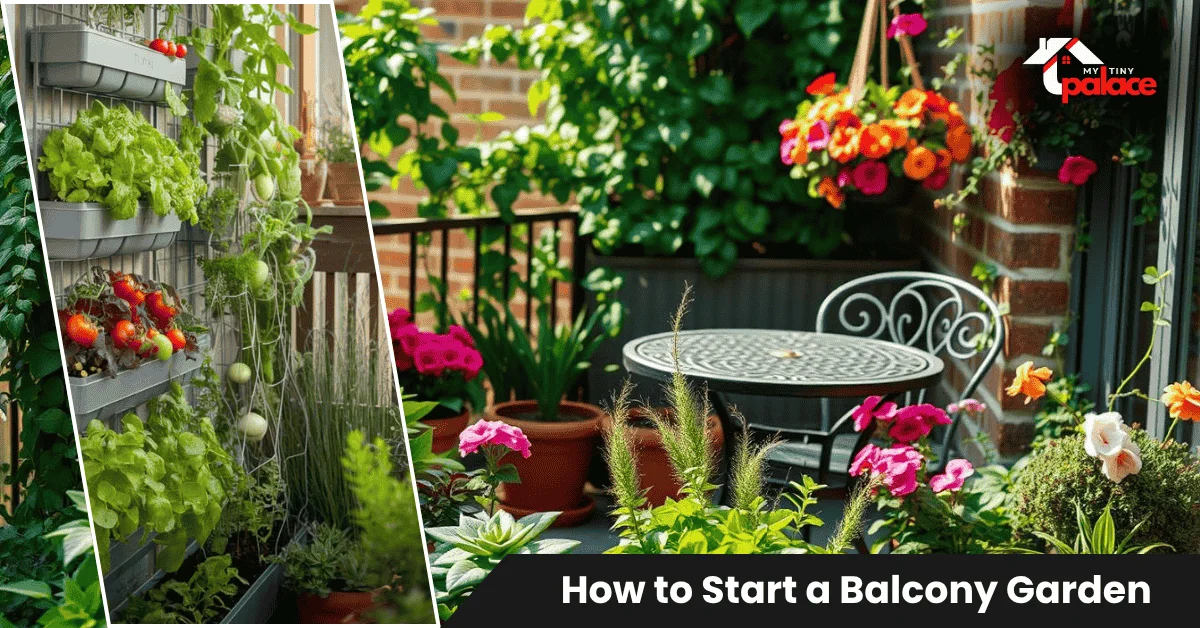
Setting up your first balcony garden follows a straightforward process. Take it slow, and you’ll avoid the most common mistakes that frustrate beginners.
Step 1: Assess Your Balcony
Walk onto your balcony at different times of day and note where the sunlight hits. Mark sunny spots for vegetables and herbs, shadier areas for greens. Measure the space and identify where you’ll place containers without blocking doors or creating tripping hazards. Check weight capacity by reviewing lease documents or asking building management. Test wind levels on a breezy day to find sheltered spots for lighter pots.
Step 2: Choose Containers and Soil
Buy or repurpose containers with drainage holes. Size matters — herbs need at least 6-inch pots, while tomatoes and peppers want 12-inch or larger containers. Bigger pots hold more soil moisture, meaning less frequent watering and healthier root systems. Fill containers with quality potting mix, leaving about an inch of space at the top to prevent overflow when watering.
Step 3: Pick Your Plants
Start with four to six plants maximum for your first season. This keeps things manageable while you learn watering schedules and care routines. Choose a mix based on your light conditions — maybe two herbs, one vegetable, and a flowering plant for visual interest. Buy seedlings from nurseries if you want quick results, or start from seeds if you enjoy watching the full growing process.
Step 4: Arrange and Plant
Place containers in their final spots before filling with soil and plants — they get heavy fast. Put taller plants toward the back or sides where they won’t shade shorter ones. Cluster containers with similar water needs together for easier maintenance. When planting, gently remove seedlings from their nursery pots, loosen roots slightly if they’re circling, and nestle them into your potting mix at the same depth they were growing before.
Step 5: Set Up Watering Routines
Most balcony plants need watering when the top inch of soil feels dry to your finger. This might mean daily watering in summer heat or every few days in cooler weather. Water slowly until liquid drains from the bottom — this ensures the entire root zone gets moisture. Never let plants sit in standing water, which causes root rot. Empty drainage trays within an hour after watering.
The 5 Key Steps
Following these five steps creates a solid foundation:
- Assess your balcony for light, space, and weight capacity
- Choose proper containers with drainage and quality potting mix
- Select beginner-friendly plants matched to your light conditions
- Arrange thoughtfully and plant at the correct depths
- Establish consistent watering and basic fertilizing schedules
These steps take maybe two hours total for a small setup. The ongoing maintenance requires just 10-15 minutes daily for watering and quick checks.
Costs, Time & Maintenance at a Glance
Starting a basic balcony garden costs between $50-$150, depending on how many plants you grow and whether you repurpose containers. A typical beginner setup with five pots, soil, seeds or seedlings, and basic tools runs about $75. You can cut costs by using recycled containers, starting from seeds instead of buying transplants, and making your own compost for fertilizer.
Initial setup takes 2-4 hours spread over a weekend. This includes shopping, preparing containers, planting, and arranging everything. Once established, daily maintenance needs just 10-20 minutes for watering and quick inspections. Add 30 minutes weekly for pruning, fertilizing, and addressing any issues that pop up.
Effort level sits firmly in the “easy” category for herbs and simple vegetables. These plants forgive minor mistakes and bounce back quickly. Flowering annuals and fruiting vegetables like tomatoes need slightly more attention but still qualify as low-maintenance compared to traditional gardening.
Most herbs and greens show visible growth within two weeks. You’ll harvest your first herbs in 4-6 weeks, leafy greens in 6-8 weeks, and tomatoes or peppers in 10-12 weeks. This relatively quick payoff keeps beginners motivated through the learning curve.
Expect to water almost daily during hot summer months, less frequently in spring and fall. Fertilizing happens every 2-4 weeks, depending on your plant types and soil quality. Pruning and deadheading take just minutes when done regularly rather than waiting for major overhauls.
Common Mistakes to Avoid in Balcony Gardening
Overwatering kills more container plants than any other issue. People seethe the soil surface dry and panic, not realizing roots below still have plenty of moisture. Always check the soil an inch down with your finger before watering. If it feels damp, wait another day. Consistent wetness causes root rot, which shows up as yellowing leaves and stunted growth.
Using containers without drainage holes guarantees failure. Water needs somewhere to go, and trapped moisture creates swampy conditions that suffocate roots. If you love a pot that lacks holes, use it as a decorative outer sleeve with a properly draining inner pot that lifts out for watering.
Planting sun-lovers in shade wastes money and effort. Tomatoes in full shade produce nothing. Lettuce in blazing sun bolts and turns bitter. Match plants to your actual light conditions instead of forcing what you want to grow into spaces where they’ll struggle.
Ignoring wind exposure leads to dried-out soil and toppled pots. Balconies amplify wind effects, especially on upper floors. Secure lightweight containers with bungee cords or position them in corners and against walls where wind can’t catch them.
Choosing pots that are too small restricts root growth and forces constant watering. Herbs tolerate smaller containers, but vegetables need room to spread. A tomato plant in a tiny 6-inch pot never reaches full potential and yields disappointing results. Size up for better outcomes.
Forgetting to fertilize depletes container soil quickly since nutrients wash away with each watering. Unlike ground gardens, where roots explore for food, container plants rely entirely on what you provide. Start fertilizing a few weeks after planting and continue throughout the growing season.
Finally, giving up too soon robs you of success. Some plants take time to establish before showing progress. Seeds don’t sprout overnight, and transplants need weeks to settle in before growing vigorously. Stick with it for at least two months before deciding something isn’t working.
Final Thoughts: Growing Joy on Your Balcony
Learning how to start a balcony garden transforms unused space into something alive and purposeful. You don’t need a green thumb or years of experience — just a willingness to try, observe what works, and adjust as you go. Start small with a few easy plants, pay attention to sunlight and watering, and let your garden grow alongside your skills.
The best part about balcony gardening is its flexibility. You can begin with three herb pots this month and expand to vegetables next season. You can experiment with different plants each year without committing to permanent beds or layouts. Everything stays adaptable to your changing interests and living situations.
Measure your space before buying containers, match plants to your light conditions, and water consistently. These three habits prevent most beginner struggles and set you up for a thriving balcony garden that brings fresh greens, beautiful blooms, and daily moments of peace right outside your door. Your tiny outdoor space is ready to bloom — all it needs is you to take that first step.


